On the night of 8th / 9th June 1944 the crew of this 102 Squadron aircraft were to undertake an operational flight to lay mines in the waters off Brest, France. The aircraft took off from Pocklington at 22.30hrs with the crew being relatively new to the squadron they flew the more basic mine laying flight while other crews of 102 Squadron undertook bombing of a target in Northern France. The weather on this night was very poor, 102 Squadron and also other Yorkshire-based squadrons struggled to get their aircraft down on the ground when they returned from their operations. The specific aircraft released their mines as instructed and made for home but as they neared Pocklington at 03.46hrs Pocklington's flying control instructed this crew to divert to land at Catfoss because the weather at Pocklington was too bad. They were also instructed not to fly below 1500 feet because of the Yorkshire Wolds. The visibility near the coast and over Catfoss was very similar to that at Pocklington, the cloud base at Catfoss was recorded as being as low as 200-300 feet in the area at the time. At 03.55hrs this aircraft was flying at speed near Wassand Hall, Seaton when it hit a twenty foot high oak tree with it's port wing. The aeroplane started to break up but remained in the air until it struck a sycamore tree some 180 yards further north and then disintergrated on land just beyond this. Sadly all on board were killed in the crash in fields beyond the south-west side of Hornsea Mere at 03.55hrs. A detailed crash investigation followed and it was found that the aircraft had struck the first tree while flying at high speed and while pulling out of a dive. Why the aircraft was in a dive was not proven but it was thought that the crew had taken evasive action to avoid another aircraft that was in the area, that other aircraft was possibly Lancaster LM440 that crashed two minutes later about eight miles away from this site near Skirlaugh. Small fragments of the aircraft were located on the surface at the crash site by Albert Pritchard, Ken Reast, Eric Barton and Rodney Robinson with permission from the landowner around the year 2000 to confirm the location. The site is between Welland Hall and Stud Farm (now the home of the successful Chestnut Dairies).
Pilot - P/O George Donaldson Jekyll RAAF (405914), aged 30, wife of Dalby, Queensland, Australia. Buried Harrogate Stonefall Cemetery, Yorkshire (B/F/8).
Flight Engineer - Sgt Vivian Bertram Florent RAFVR (1449273), aged 23, of Regents Park, London. Buried Pocklington Burial Ground, Yorkshire.
Navigator - F/O David Lillington RAFVR (151193), aged 20, of Ruislip. Buried Ruislip Churchyard, Middlesex.
Navigator - F/O Vincent Phillip Hillrich RCAF (J/22201), aged 25, of Beaurepaire, Quebec, Canada. Buried Harrogate Stonefall Cemetery, Yorkshire (B/F/6).
Wireless Operator / Air Gunner - Sgt Robert Cardwell Downs RAFVR (1459769), aged 21, of Huddersfield. Buried Edgerton Cemetery, Huddersfield (Cons.Sec 14/93).
Air Gunner - Sgt Thomas Walker Rodger RAFVR (1387728), aged 29, wife of Olivos, Buenos Aires, Argentina. Buried Harrogate Stonefall Cemetery, Yorkshire (B/F/7).
Air Gunner - Sgt John Thomas George Catterwell RAFVR (1876698), aged 28, of Panfield. Buried Panfield Churchyard, Essex.
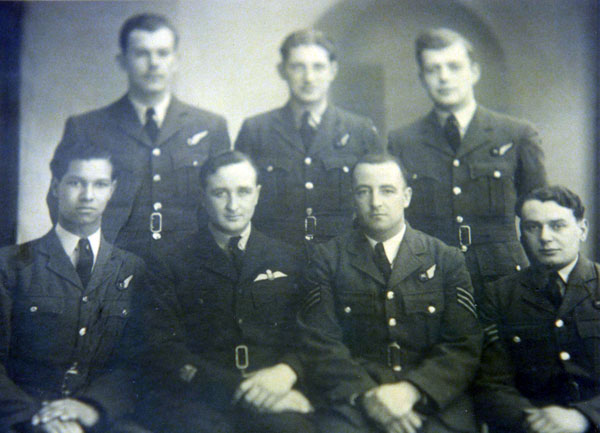
The crew of Halifax LW140. Back row (L-R): Hillrich, Downs, Lillington. Front row (L-R): Florent, Jekyll, Rodger, Catterwell. A copy of this photograph forms a small memorial to the crew within Goxhill Church, East Yorkshire.
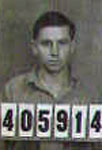
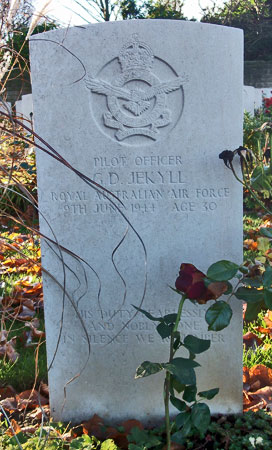
George Jekyll was born on 22nd March 1914 at Emmaville, New South Wales, Australia and was the son of George Ernest and Lillian Olive Jekyll. As a young man he worked as a jackeroo / station hand. He enlisted on 22nd June 1941 in Brisbane. After training in Australia he was awarded his pilot's wings on 6th March 1942 and then embarked for service overseas in August 1942. After he had left for service in the UK his wife gave birth to their son in October 1942. Once in the UK in 1943 he trained at 11 (P)AFU, 15 OTU and 1652 HCU before posting to 102 Squadron on 7th May 1944. He appears to have received a commission after his death, back dated to 8th June 1944.
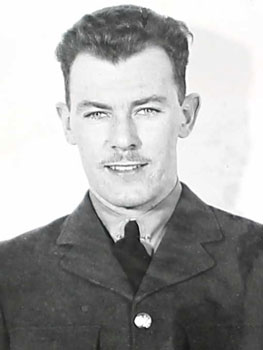
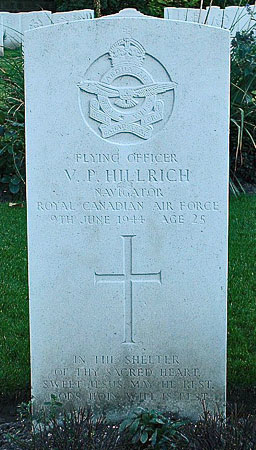
Vincent Hillrich was born on 4th August 1918 in Montreal, Quebec, Canada and was the son of Hugh Charles and Antoinette Helen (nee deGarmendia) Hillrich. As a young man he left school in 1936 and worked as a general odd-job man. In 1939 he returned to studies and attended MacDonald College, Sainte Anne-de-Bellevue (an agricultural college attached to the McGill University). In 1940 he briefly worked on the Dominion Experimental Farm at Sainte Clothilde. As war work was probably more of a requirement than experiemental farming he left this company after a few months and worked as a clerk in the production office of Canadian Car and Foundary Co. in Montreal. This company were involved in the war effort and amongst some of their products they made Hawker Hurricane aircraft on contract. He enlisted for RCAF service in Montreal on 8th September 1941 for aircrew duties and after training he was awarded his air observer's flying badge and also a commission on 3rd August 1942. He arrived in the UK in November 1942 and following training at 1 (O)AFU he was posted to 15 OTU on 23rd February 1943. He remained at 15 O.T.U. until December 1943 which may suggest he was on their books as a staff navigator for a time. In early 1944 he was posted to 1652 H.C.U. and then to 102 Squadron on 7th May 1944. His brother Charles served in the RCAF.

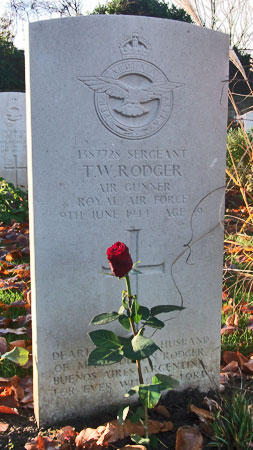
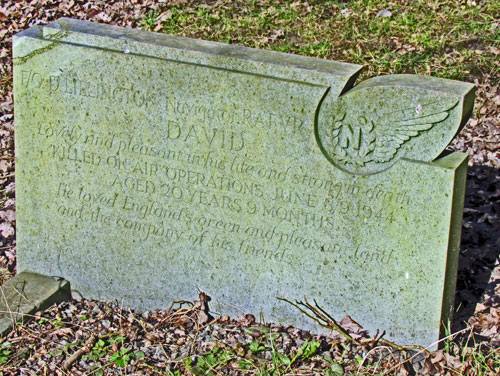
Gravestones of some of the other members of this crew. David Lillington was granted a commission to the rank of P/O on probation on 12th February 1943 and rose to F/O six months later. Vincent Florent would have been one of a rare group of black or mixed race aircrew in Yorkshire at this time.